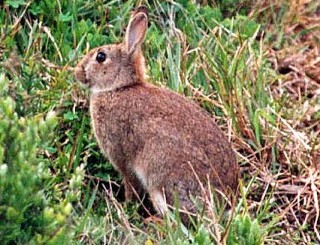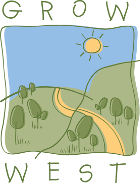Serrated tussock and rabbits are two of the biggest threats to agriculture and biodiversity in the Grow West area and across Victoria. Grow West projects aim to reduce the environmental impacts of these pests by putting native vegetation back into the landscape, generating competition and altering the conditions in which these and other pest species thrive.
Serrated tussock
Serrated tussock is a perennial grass from South America which infests more than 1 million hectares of land in south-eastern Australia. The weed is unpalatable to most grazing animals, invades native grasslands and, unfortunately, is entrenched and widespread in the Grow West area.
Serrated tussock heavily infests the steep, rocky, low-fertility soils of the Rowsley Valley and Pentland Hills. It has been successful in these areas due to the high levels of soil disturbance from rabbit activity, overgrazing and the removal of native vegetation. The weed can spread to new sites quickly as one plant can produce over 100,000 seeds per year which are easily dispersed across the landscape via wind and water.
The revegetation being undertaken by Grow West is fighting serrated tussock in two ways:
- As trees grow, they are shade out serrated tussock – reducing both the number of plants and the health and vigour of those remaining, which in turn is reduces the amount of seed produced each year.
- Stands of trees slow the spread of serrated tussock by catching airborne seeds and reducing ground level wind speed.
Rabbits

Rabbits are Australia’s most destructive pest animal, costing an estimated $239 million annually in environmental and agricultural damage. Their rapid breeding—up to 184 rabbits from a single pair in 18 months—and adaptability make them a major threat to native ecosystems.
In the Grow West area, rabbits severely impact native vegetation, especially on erosion-prone soils. Even low densities (three rabbits per hectare) can halt regeneration of species like cypress-pines and acacias. Their grazing also encourages invasive weeds like blackberry and supports fox populations.
Grow West projects help tackle this issue by supporting landholders to reduce rabbit numbers through baiting, fumigation, and harbour removal. Participating landholders must reduce rabbit densities below three per hectare to protect young plantings. As vegetation matures, it naturally deters rabbits and reduces erosion, creating a more resilient landscape.

